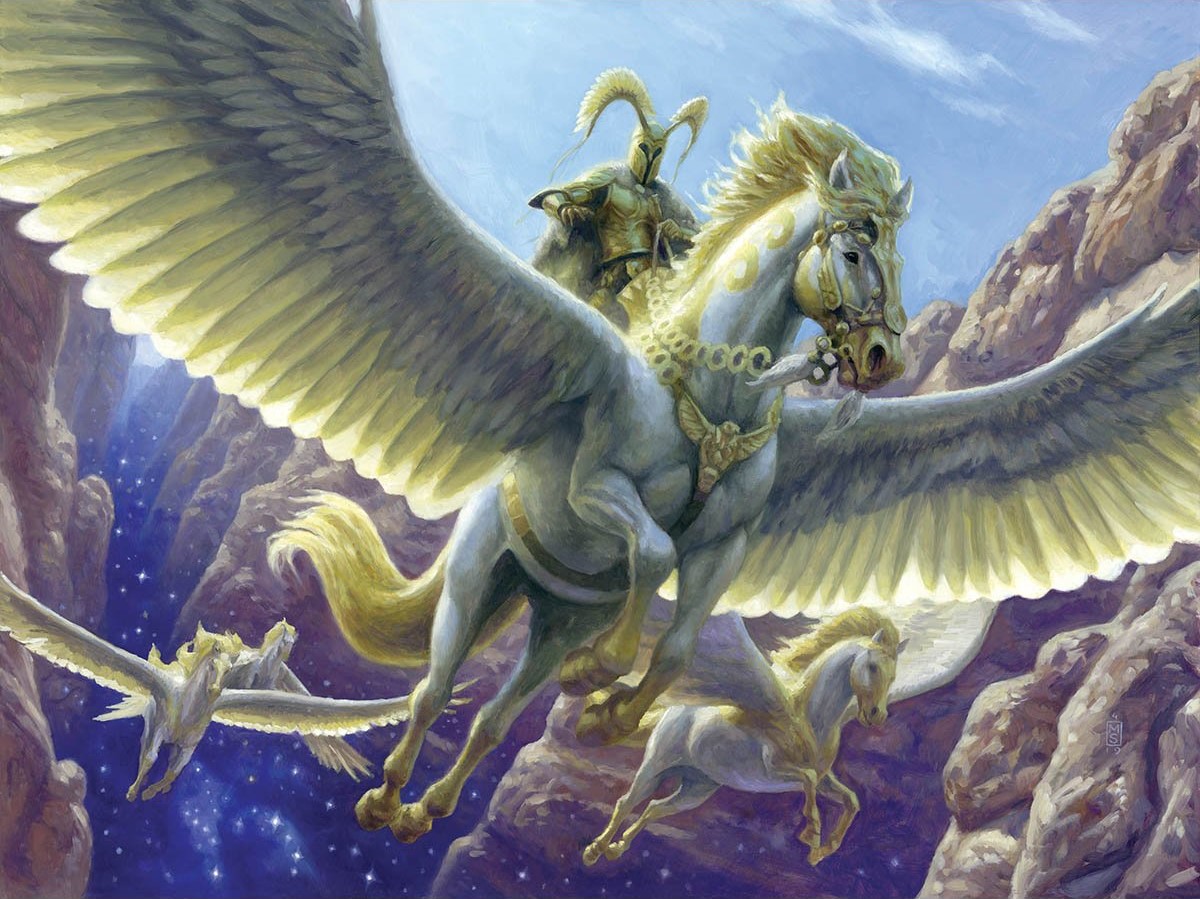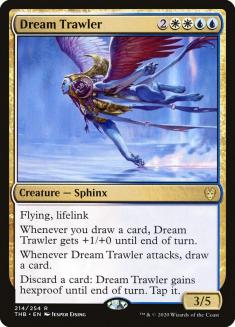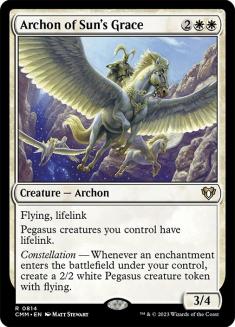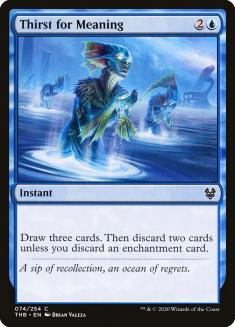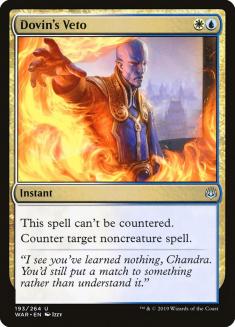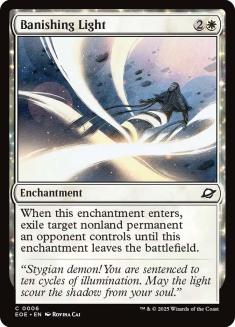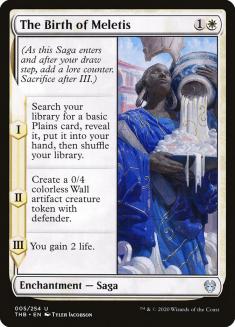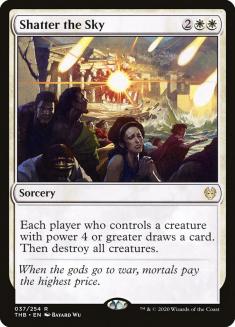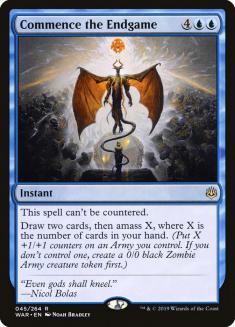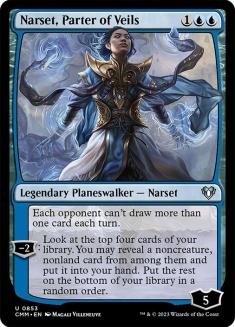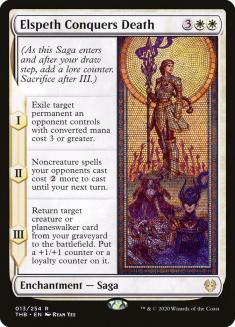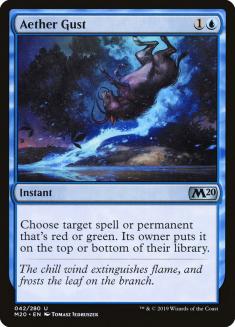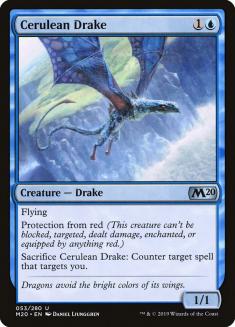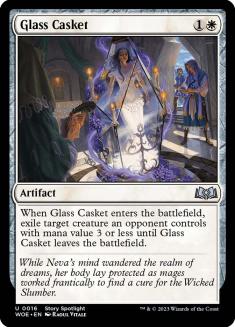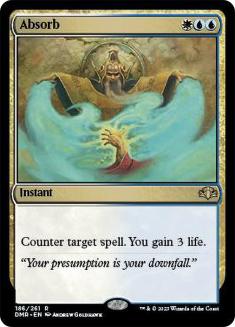This past weekend has been a surreal experience. As I make my way home from Honolulu, I don’t think I’ve fully grasped what this title means to me yet – there are so many feelings hitting me from all sides and the whole thing has been so overwhelming that I’ve barely been able to sleep. Often, I find myself thinking through my career, about how many times I actually dreamed this would happen. Sometimes I think about what this means for the future – locking MPL and probably an invite for next year’s World Championship already. Sometimes I think about the Finals and some questionable plays I made. Sometimes I play back in my mind all the messages of support I’ve received, even from people who before this weekend barely had any idea what Magic even was. Sometimes I just start smiling out of nowhere. Sometimes, there are tears. It must’ve been slightly awkward for the people sitting next to me on the plane.
In today’s article, I’m going to go over how I became the 2019 Magic World Champion – what the testing process looked like, how we arrived at what I believe is the best deck in Theros Beyond Death Standard, and how you should play and sideboard with it.
When I figured out I was qualified for World Championship XXVI, I knew I wanted to test with Ondrej Stráský. We’ve tested together for a number of events and, of all the people qualified, he was my closest friend. He also came attached to the Czech players who lived with him – Stan Cifka, Ivan Floch and Jan Kotrla (KK) – all of whom proved invaluable during both our testing process and the tournament.
The trickiest part to solve was the logistics. Ondrej was obviously going to play Players Tour Brussels, which made the whole thing kind of complicated. There’s not actually much difference between Phoenix and Brussels for me – both are about 20 hour flights – but we were going to Hawaii straight after, and Europe isn’t exactly on the way. Still, I figured that it was worth the detour to be able to test with them in person in the Czech Republic, so we arranged for me to stay with them for about two weeks before the tournament. Ondrej, Stan, and I would focus mostly on Standard, and Ivan would focus on Pioneer, though we all dabbled into Pioneer at various points.
Testing for this tournament was intense, and I think I played more Magic during this two-week span than I ever have before. Most of the time, when we meet to test, we’re in a pretty big group and we do a lot of socializing (for example, we have many long meals) – we can afford to, because we have so many people. In Prague, it was just the three of us, so we didn’t have this luxury. We ordered food for lunch every day, and then double-ordered so that it would last until dinner and we wouldn’t have to order again. We had groceries delivered. We had people come to our house to do drafts. During the two weeks I stayed in Prague before deck submission, I left the house exactly twice.
Obviously Magic is a weird game, and there’s no way to know if the time you spend testing will actually translate into anything – we could test for two weeks and then end up playing stock Mono-Red Aggro for all I knew – but, just this once, I wanted to make absolutely sure that, if I failed, I would be able to look back and say I did everything in my power to succeed. I even messaged Wizards of the Coast (WotC) and specifically asked for the white noise effect they would run on the feature match, because it strongly bothered me the previous times and I wanted to get used to it so it wouldn’t affect me as much. I played with white noise the entire time during playtesting, and while that in retrospect might have removed like 10% of my hearing capacity, hey, totally worth it.
The early stages of our testing consisted of just playing on the MTG Arena ladder to get a feel for the format. We had no previous big tournament to draw information from (which I quite liked), and we needed to figure out what people were playing and what was good. Most of the time I prefer a more “internal” approach of testing against your teammates, since you can direct the matchup and the results are a lot more reliable, but for that initial moment and for the amount of people we had, testing on ladder was actually pretty good.
Azorius Control caught my eye very early on, but that I eventually moved away from it because of what I perceived to be a bad matchup against Temur Reclamation. It was only after trying a variety of other things – basically all stock decks and more fringe archetypes like Rakdos Cats or the Enigmatic Incarnation deck I wrote about last week – that I eventually got back to it. At that point, Stan had a version of the deck that included fewer Dream Trawlers than normal, and way more counterspells than I was used to. He said he was having success against Temur Reclamation on ladder – I thought he was just playing against bad people. So we decided to move to “in-house” testing.
I played Temur Reclamation and he beat me with his Azorius Control list – plenty of times, in fact. That got me back on the Azorius Control train, and we tuned it a little more, alternating ladder play with directed testing for specific matchups and cards. In the end, we were very happy with our list. Here’s what Ondrej and I played:
Creatures (2)
Planeswalkers (6)
Lands (25)
Spells (27)

I’ve read many times that our deck was specifically teched out for the World Championship XXVI metagame we expected, and that you shouldn’t just replicate it blindly “in the wild.” While this phenomenon happens from time to time, I don’t believe this is what happened here – I think our deck is just a good Standard deck for an open field.
Most of our testing was done on MTG Arena ladder (where we all had a lot of success with it), and our build evolved over time to face the challenges we encountered there. If we added Mystical Dispute to our deck, for example, that’s just because we considered it a good card to have in Theros Beyond Death Standard, and not because we predicted a specific Worlds metagame that would make it better than normal. At no point did we think the Worlds field was going to be significantly different from the MTG Arena field – I’ve read that “Paulo and Ondrej didn’t expect anyone to be playing red and that’s why they chose this build,” for example, and that’s simply not true – Mono-Red Aggro was the most popular deck while we played on ladder and we expected a good number of people to bring it (otherwise we wouldn’t have had Cerulean Drake in our sideboard).
If you’re going to pick this build of Azorius Control up, however, you should know that this deck is very hard to play. Games in Standard can be quite tricky overall (and we saw many incredible games at World Championship XXVI because of that), but this version of the deck makes things even trickier because it’s very unforgiving – you have to make a lot of decisions every turn of the game and, if you make the wrong one, you might never be able to recover.
I recognized this was a hard deck to play early on, and because of that I practiced a lot with it. Despite all that, I still got a barrage of questions from my friends every time I exited a feature match and my reply was usually the same:

A lot of my mistakes came from being nervous and not thinking straight (I’ve certainly never been this nervous in a tournament in my life), but some of them simply come from the deck being just hard to play – I thought about things, nice and proper, and then made the wrong decision.
If I had to describe this deck’s play style in one word, it would be “patience.” This is not a tapout control deck where you just slam your planeswalkers or Dream Trawler and then whatever they do doesn’t matter. You often don’t even cast your three-mana planeswalkers until much later in the game, and you try to obtain total control of the game.
The key obstacle to your world domination is Teferi, Time Raveler. I believe this deck is advantaged versus other Teferi decks, since it has more counterspells, but this can backfire if they actually resolve their Teferi, because then it blanks more of your cards. Because of this, priority number one in any single game is not letting them resolve a Teferi. You do have some tools to deal with it if it resolves – Elspeth Conquers Death and Banishing Light – but these often force you to enter a tap-out war, which means you give up your advantage of playing more counterspells. If your choice is between playing your own Teferi or keeping Absorb up for theirs, you will almost always keep Absorb up, as you’re in no rush.
You also need to learn to not get desperate. Sometimes, it’s worth taking a lot of damage so that you can cast Shatter the Sky and Absorb in the same turn, rather than just firing off Shatter the Sky at your first opportunity. Sometimes, it’s worth letting them kill your planeswalkers so you can Shatter the Sky at the end of the turn (via a Teferi activation), for example, just to make sure you untap facing an empty battlefield. One of the plays I messed up in the tournament was when I decided to cast Elspeth Conquers Death instead of just waiting, sacrificing my Teferi, and casting a Shatter the Sky at the end of the turn.
You should also always keep in mind the fact that you can bounce your own permanents with Teferi – it’s a very common play pattern with the deck. Before Theros Beyond Death, you almost never did that, but I think overall with this build I bounce my own permanents more than I bounce my opponent’s. Bouncing Omen of the Sea is a powerful draw engine, bouncing Elspeth Conquers Death makes sure you can answer an unlimited amount of threats, and resetting Banishing Light comes up quite often as well, especially when so many legendary permanents are involved (which means you can bounce the Banishing Light for free when they cast a second copy). It’s partially because of the interaction between Teferi and your own enchantments that you can achieve total control of the game.
Some explanations on the differences between our deck and most other Azorius Control builds:
When people saw our list, they laughed at the fact that we only played one Dream Trawler. We thought Dream Trawler was a good card, but it wasn’t necessary – due to having so many counterspells and acquiring so much advantage via Teferi bouncing your own enchantments, we had no trouble closing out the game. We could usually just get to a point where we could never lose and then actually winning the game was academic. In some games you will draw Dream Trawler and just slam it on Turn 6, but you rarely need to do that. Having more can result in some very clunky draws that we wanted to avoid.
Instead, we maindecked one copy of Archon of Sun’s Grace. We felt that this card often overperformed compared to Dream Trawler if your opponent was aggressive, and it was good enough as a win condition. There aren’t that many ways to kill it in the format, and you can always get it back with Elspeth Conquers Death if it’s not exiled.
Archon of Sun’s Grace is also the most important card in your sideboard (and honestly maybe the most important in the entire 75). You obviously bring it in versus aggressive decks like Mono-Red Aggro but it’s also a key piece in your somewhat transformative plan against decks like Jeskai Fires and some builds of Temur Reclamation which bring in multiple creatures against you. You don’t often want to have all Shatter the Sky or Glass Casket versus these decks, but you also don’t want to lose to a random Legion Warboss, Robber of the Rich, or Brazen Borrower, and Archon of Sun’s Grace is a proactive card that trumps every single one of these creatures. It’s two mana cheaper than Dream Trawler, and very importantly it isn’t blue, so it doesn’t get hit by discounted Mystical Dispute.
I have no doubt I would not have won this tournament without access to Archon of Sun’s Grace.
Having so many counterspells, we figured we also wanted to have instant-speed card drawing. We couldn’t justify four Narset, Parter of Veils in a deck that rarely wants to tap out on Turn 3. The combo with Elspeth Conquers Death is also quite good, as you can discard a planeswalker or a creature straight onto the battlefield. Make sure you actually think about what you’re discarding, though – a lot of the time it’s better to keep the enchantment and just discard two other cards.
Mystical Dispute and Dovin’s Veto are excellent against a big percentage of the field, and even when they are bad they are often passable – you don’t want a Mystical Dispute in your hand versus Mono-Red Aggro, but if you’re on the play you can just trade it with one of their better cards, so it’s not a disaster like having Aether Gust versus an Azorius deck.
We originally didn’t have Banishing Light, but decided we needed a better answer for Hydroid Krasis. Given that there are other problematic permanents you need to answer (Teferi, Fires of Invention), and the fact that it’s an enchantment that you can discard to Thirst for Meaning and use to make tokens with Archon, it would be absolutely crazy to play Glass Casket over Banishing Light in this build.
Resetting Banishing Light with Teferi comes up a lot when dealing with legendary duplicates, as well as Hydroid Krasis or Uro, Titan of Nature’s Wrath. It’s also possible to use it on Cavalier of Thorns and just deck your opponent by casting Banishing Light and bouncing it over and over – the milling is not optional and the main way you win that matchup is by decking them, so it’s a good way to speed up the process and catch them off guard.
VS Azorius Control
Creatures (4)
Planeswalkers (8)
Lands (25)
Spells (23)

I believe this deck is usually advantaged against other builds of Azorius Control – it ranges from very slightly advantaged to very favorable, depending mostly on the number of counterspells they play. Corey Baumeister version, for example, which ran four copies of Absorb as counterspells and only one Castle Ardenvale, is a very good matchup. If people start playing our list, obviously you’re going to have to do something else to actually be advantaged in the mirror, but most people seem to follow the “they metagamed it for the tournament, the actual deck should have four Dream Trawler and zero Dovin’s Veto” philosophy, so you should still be good.
The most important cards in the mirror are Teferi, Time Raveler and Castle Ardenvale. You don’t need to resolve Teferi to win, but you should do everything in your power to stop them from having one. Eventually you will resolve yours, and that will blank four to six cards in their deck, which means you can now just spend all your resources on protecting your Teferi and dealing with their Dream Trawler.
The most common win condition in this matchup is Castle Ardenvale, though you’ll usually know when you need to try for a creature kill (for example, if they have as many Castles as you do and more cards in their deck, you need to do something). The sheer number of counterspells in your deck compared to other lists means you can usually find a way to kill them even if they have multiples of Shatter the Sky.
Out:
In:
After testing, we felt that Commence the Endgame was the best mirror breaker, since it’s instant-speed and can’t be countered, so you can just cast it. It doesn’t do anything versus Teferi, but your entire gameplan is to not let that card resolve anyway, and when you have Commence then you can just make sure to never tap out.
We tried Spectral Sailor as well, but found out that, in most sideboarded games, we’d actually rather make a 1/1 with Castle Ardenvale over drawing a card, so it wasn’t the most efficient use of a sideboard slot.
VS Mono-Red Aggro
Creatures (31)
- 4 Runaway Steam-Kin
- 4 Scorch Spitter
- 4 Robber of the Rich
- 4 Fervent Champion
- 4 Bonecrusher Giant
- 3 Torbran, Thane of Red Fell
- 4 Rimrock Knight
- 4 Anax, Hardened in the Forge
Lands (22)
Spells (7)

Everyone assumed we thought no one was going to play Mono-Red Aggro, which was funny because we thought it was going to be one of the most-played decks. Based on the comments I read when decklists were reviewed, it seems people’s perception was that we could never beat Mono-Red. I believe we’re actually favored in a match.
My philosophy here is that Mono-Red is never going to be a good matchup Game 1, and the games you win, you win because you draw Shatter the Sky. Having four copies of Dream Trawler in your deck is good, but still probably not good enough if you don’t draw Shatter the Sky, and having Glass Casket over Banishing Light improves your matchup only slightly (plus Archon of Sun’s Grace is arguably better than Dream Trawler here). It also helped that, for the tournament, we had decklists, so we could mulligan appropriately – on ladder you’re always going to keep a hand of four lands, Dovin’s Veto, Mystical Dispute, and Teferi, Time Raveler, but if you know you’re playing versus Mono-Red, it’s an automatic mulligan and that means you win a lot more Game 1s.
So, in the end, we’re giving up some percentage versus Mono-Red in Game 1, but we get it back with interest for Games 2 and 3. Since our maindeck already has a lot of the cards other people need to put in their sideboard (Dovin’s Veto and Mystical Disputes, for example), this means we have a lot more room to play dedicated cards against aggro. I think our sideboarded games versus Mono-Red are actually quite good, which means the match is overall favorable even if Game 1 is bad.
Out:
In:
This is how I sideboarded against Seth, but against Eli Loveman I would have another Elspeth Conquers Death in my deck on the draw, since he had three copies of Experimental Frenzy.
Creatures (28)
- 4 Runaway Steam-Kin
- 1 Tin Street Dodger
- 4 Scorch Spitter
- 4 Robber of the Rich
- 4 Fervent Champion
- 4 Bonecrusher Giant
- 3 Torbran, Thane of Red Fell
- 4 Anax, Hardened in the Forge
Lands (21)
Spells (11)

Some people play a bunch of Devout Decrees, but we preferred Cerulean Drake and Aether Gust. Aether Gust is very flexible and you want it in many other matchups (Jeskai Fires, Temur Reclamation, Simic Ramp), and Cerulean Drake is just a much more powerful card against them, since it stops any number of one-drops and several of the two-drops. It’s also important that the two cards you’re bringing in are blue, since every Mono-Red deck has Unchained Berserker, which creates some awkward situations if all you have is white removal. It’s possible for them to kill Cerulean Drake in combat via Stomp (since all damage can’t be prevented), but not everyone even has Bonecrusher Giant, and even if they do it, you still get to kill a creature from them (plus if you have Teferi, Time Raveler, then they have to Stomp precombat and you can block accordingly).
VS Temur Reclamation
Creatures (9)
Lands (27)
Spells (24)
- 2 Opt
- 4 Expansion
- 4 Growth Spiral
- 4 Wilderness Reclamation
- 1 Scorching Dragonfire
- 2 Omen of the Sea
- 3 Storm's Wrath
- 4 Thassa's Intervention
Sideboard

This is a good matchup, though it can get harder depending on their version (Chris Kvartek’s, for example, is much harder since he has four extra threats in Nissa, Who Shakes the World). It’s possible to cheese a game win with Dream Trawler, but the main way you win Game 1 is decking – they have very few threats in their deck (usually ranging from eleven to thirteen depending on the number of Hydroid Krasis) and you just need to exhaust them all. Just make sure you save some Dovin’s Vetos for their Expansion // Explosions later in the game and you will almost certainly win. Brazen Borrower early can be an annoyance but you can usually take twelve damage and then get rid of it.
Out:
In:
It might seem weird to sideboard out Absorb when it’s so good Game 1, but you can only play so many reactive spells and the ones you’re bringing in are all better (Aether Gust in particular is very good because it can deal with Shifting Ceratops; Niv-Mizzet, Parun; or a resolved Nightpack Ambusher). Sideboarding here depends heavily on which version they play – some people don’t play Hydroid Krasis, for example, which makes Narset, Parter of Veils much worse, and against Kvartek, I sideboarded in all the Archon of Sun’s Graces because he had Nissa, Who Shakes the World.
VS Jeskai Fires
Creatures (19)
- 4 Sphinx of Foresight
- 4 Cavalier of Flame
- 2 Cavalier of Gales
- 3 Kenrith, the Returned King
- 4 Bonecrusher Giant
- 2 Dream Trawler
Planeswalkers (4)
Lands (27)
Spells (10)

This matchup ranges from slightly bad to slightly good depending on their version. Nassif, for example, had Brazen Borrower, which is very good; Marcio, on the other hand, had Aether Gust, which doesn’t do anything – that’s a big swing. Marcio had one Tithe Taker and Nassif had zero.
Game 1 is usually good for you, as you can just counter everything and eventually win, but Games 2 and 3 can be tricky because they bring in creatures and Mystical Dispute, so you need to adjust your strategy.
Out (on the play):
In (on the play):
On the play I think you’re still favored, as you have a lot of answers to their creatures (given that you can Dispute or Absorb them). Archon of Sun’s Grace does a lot of work here, since it stops their creature plan singlehandedly but can also go toe-to-toe with their Cavalier plan on a good day.
Out (on the draw):
In (on the draw):
Sideboarded games on the draw are much tougher, and you’re definitely an underdog because you simply don’t have enough answers to their early threats, which can be quite diverse – it’s easy to have Mystical Dispute when they have Legion Warboss or Aether Gust when they have Teferi or Sphinx of Foresight, and then it’s hard to recover. Cerulean Drake is included in an attempt to stop a Turn 3 Bonecrusher Giant and delay a Legion Warboss (while also potentially blocking Cavalier of Flame later on), but it’s only passable in the matchup (and I’m not entirely sure if it’s better to have the second Drake, the fourth Dispute, or the first Dream Trawler). The best plan here is often to play a full tapout game – deal with things as quickly as you can and hope your opponent can’t punish you.
Against Gabriel Nassif, I took out Banishing Lights, since he had Brazen Borrowers, and kept in some Absorbs.
Practice Makes Perfect
From this, you can see that, of the four most popular decks, one is the mirror and three range from even to good matchups. This, of course, doesn’t mean this deck has all good matchups – Piotr Glogowski’s Jund Sacrifice, for example, was a deck I didn’t want to face, and there can be other bad matchups too (Simic Ramp with Agent of Treachery, aggro builds that aren’t hit by Cerulean Drake and Aether Gust, a potentially even more hateful version of the mirror), but overall I think it’s a pretty good spot to be in, and I definitely recommend this build going forward.
Just make sure you practice with it because it really isn’t easy to play.

